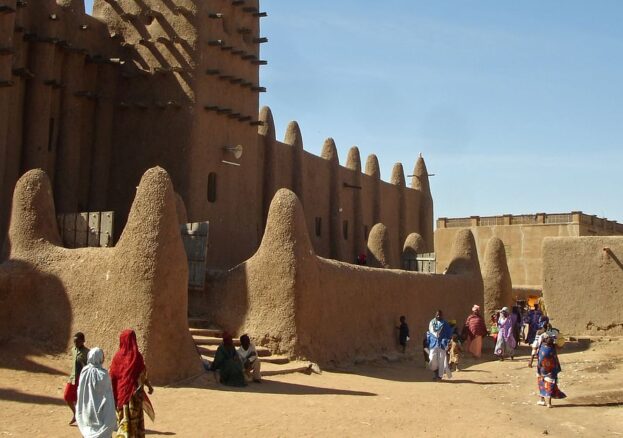
The Mali Empire was a powerful West African empire that existed from the 13th to the 17th century. It was located in what is now Mali, Senegal, Gambia, Guinea, Mauritania, and parts of Niger and Burkina Faso. The empire was founded by Sundiata Keita, a legendary warrior king, in 1230.
The Mali Empire was known for its wealth, which was largely derived from trade. The empire controlled important trade routes that connected West Africa with North Africa and the Mediterranean world. Gold, salt, and other commodities were traded along these routes, making the Mali Empire one of the wealthiest in the world at the time.
The Mali Empire was also known for its vibrant culture and scholarship. The city of Timbuktu, which was located in the heart of the empire, became a major center of Islamic scholarship and learning, and was home to many universities and madrasas. Timbuktu was also known for its libraries, which contained thousands of manuscripts on a wide range of subjects, including science, mathematics, medicine, and literature.
Under the leadership of Sundiata Keita and his successors, the Mali Empire became one of the wealthiest and most powerful empires in Africa. The empire was known for its abundant gold resources, which were used to finance the construction of impressive architecture, such as the famous Great Mosque of Djenné.
The Mali Empire was also known for its thriving trade network, which stretched across the Sahara Desert and into North Africa and the Middle East. Traders would exchange gold, salt, ivory, and slaves for goods such as textiles, spices, and luxury items like silk and ceramics.
Islam was introduced to the Mali Empire in the 11th century, but it wasn’t until the 14th century that it became the dominant religion. Many of the empire’s rulers, including Mansa Musa, were devout Muslims and helped to spread the religion throughout West Africa.
The Mali Empire declined in the 16th century due to internal conflicts, attacks from neighboring states, and the collapse of the trans-Saharan trade network. However, its legacy can still be seen today in the cultural traditions and architecture of West Africa.
Here is a timeline of key events in the Mali Empire’s history:
- 1230: Sundiata Keita, also known as the Lion King, establishes the Mali Empire after defeating the Sosso Empire in the Battle of Kirina.
- 1235-1255: Sundiata Keita expands the Mali Empire through conquest, gaining control over the gold and salt trade routes and establishing a capital at Niani.
- 1307: Mansa Musa becomes king of the Mali Empire, ushering in a period of great prosperity and expansion.
- 1324: Mansa Musa embarks on a pilgrimage to Mecca, bringing with him a large entourage and vast amounts of gold. His pilgrimage earns him fame throughout the Islamic world and establishes Mali as a major center of trade and scholarship.
- 1337-1374: Reign of Mansa Suleyman, who continues the expansion of the Mali Empire and establishes Timbuktu as a center of Islamic scholarship and learning.
- 1380: Mali begins to decline after the death of Mansa Suleyman. Internal conflicts, rebellions, and attacks by neighbouring states weaken the empire.
- 1464-1492: Reign of Sunni Ali Ber, founder of the Songhai Empire, which eventually conquers and absorbs the Mali Empire.
- 1591: The Moroccan invasion of the Songhai Empire marks the end of the Mali Empire and the beginning of the era of European colonialism in West Africa.
Today, the legacy of the Mali Empire can still be felt in the region’s traditions, languages, and art. The Mandinka language, which was spoken by the empire’s ruling class, is still spoken by millions of people in West Africa today. The empire’s art and architecture, including the famous Great Mosque of Djenné, continue to inspire artists and architects in the region. And the legacy of Mansa Musa and the empire’s wealth can still be seen in the many gold artifacts and jewelry produced in West Africa today.
